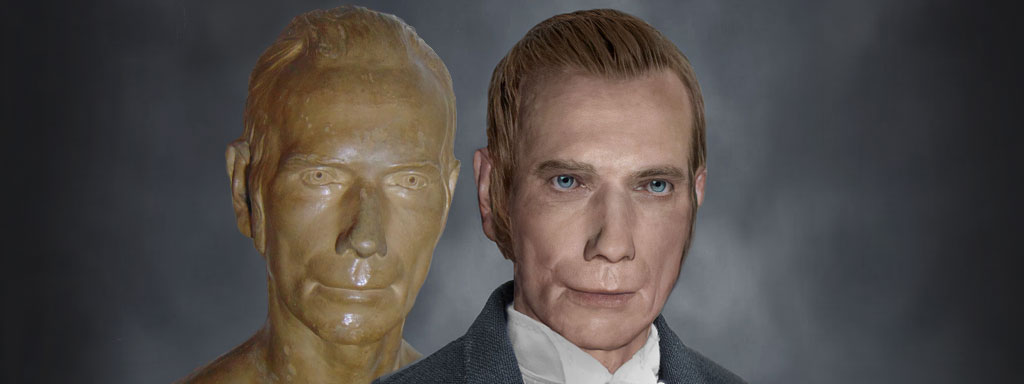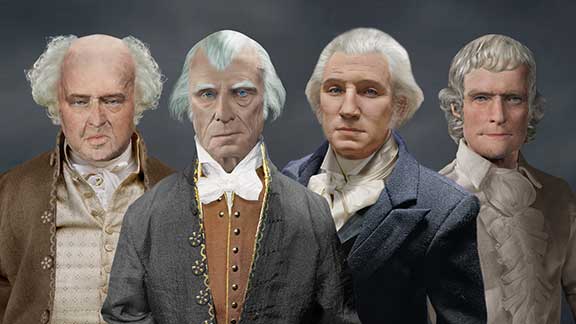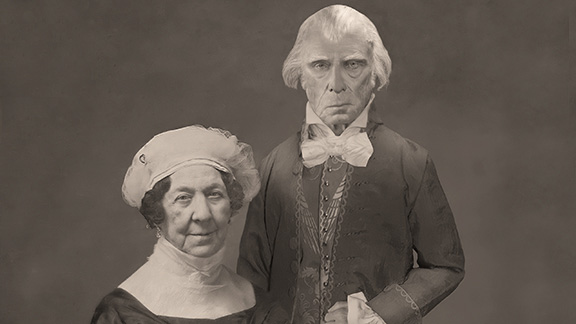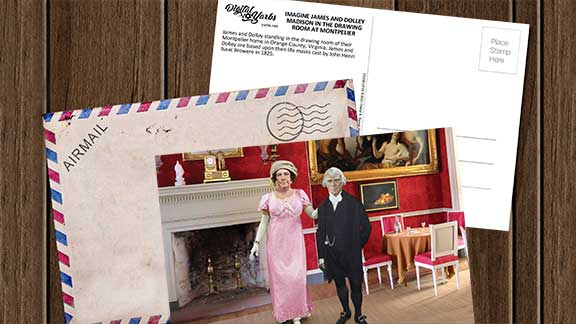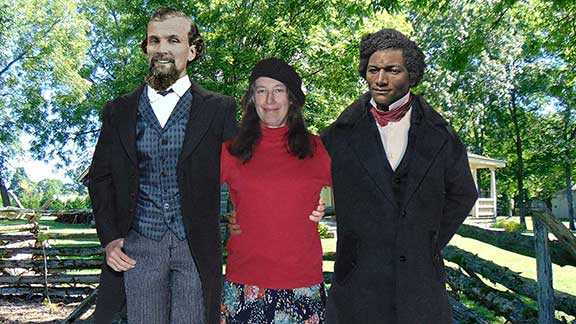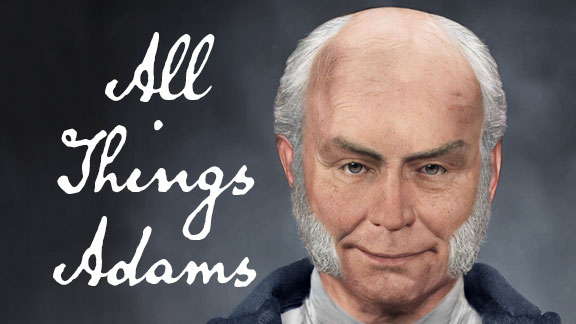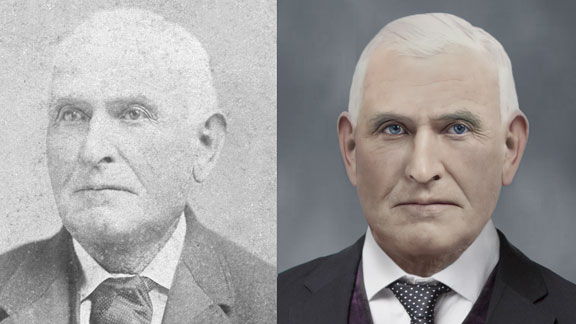Home >> Life Mask Facial Reconstructions of History >>The Real Face of Henry Clay - Life Mask Reconstruction
What did Henry Clay Look Like?
We have many photographs of the elder Henry Clay but none of his younger years. Sculptor John Henri Isaac Browere cast the life mask of Henry Clay in 1825 during his visit to Washington, D.C. Now with the reconstruction of Clay's life mask we can see him at 48 years of age.
The following was written by Charles Henry Hart in 1897.
"Henry Clay, who wore the appellation, conferred upon (Wiliam) Pitt, of “the Great Commoner,” long before it was given to Mr. (W.E.) Gladstone, has left behind him perhaps the most distinct personality of any of the statesmen of his era. Where Daniel Webster counted his admirers by hundreds, Henry Clay was idolized by thousands; the one appealing to the head and the other to the heart. His strongly marked features are familiar to every one, from the scores of portraits of him to be found here, there, and everywhere; while there are, living to-day, a large number of people who knew Clay in the flesh; so that Browere’s bust of him needs no perfunctory certificate to assure of its truthfulness. It is certainly human to a wonderful degree, and there could scarcely be any truer portraiture than this, wherein we have the very features of the living man down to the minutest detail."1
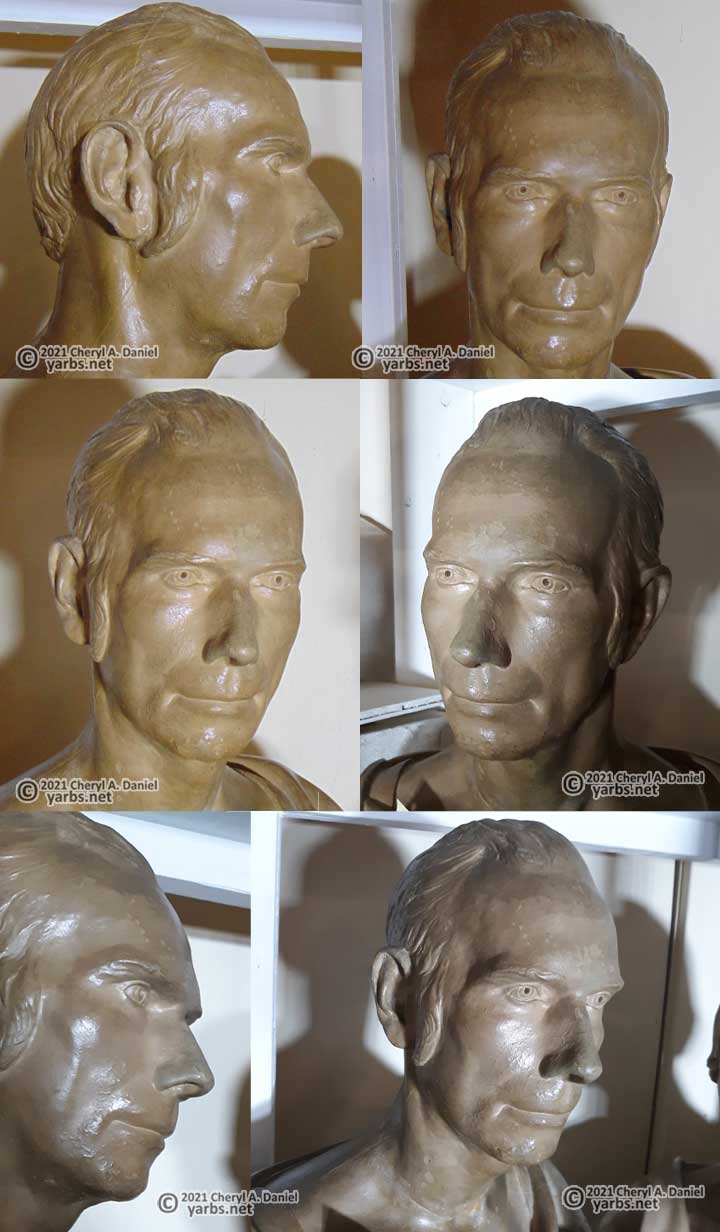
"Clay was of striking physique. He was quite tall, nearly six feet two inches, rather sparsely built, with a crane-like neck that he endeavored to conceal by his collar and stock. He had an immense mouth, phenomenal for size as well as shape, and kindly blue eyes which were electrical when kindled. Yet he was so magnetic in his power over men that when he was defeated for the Presidency, thousands of his Whig followers wept as they heard the news."2
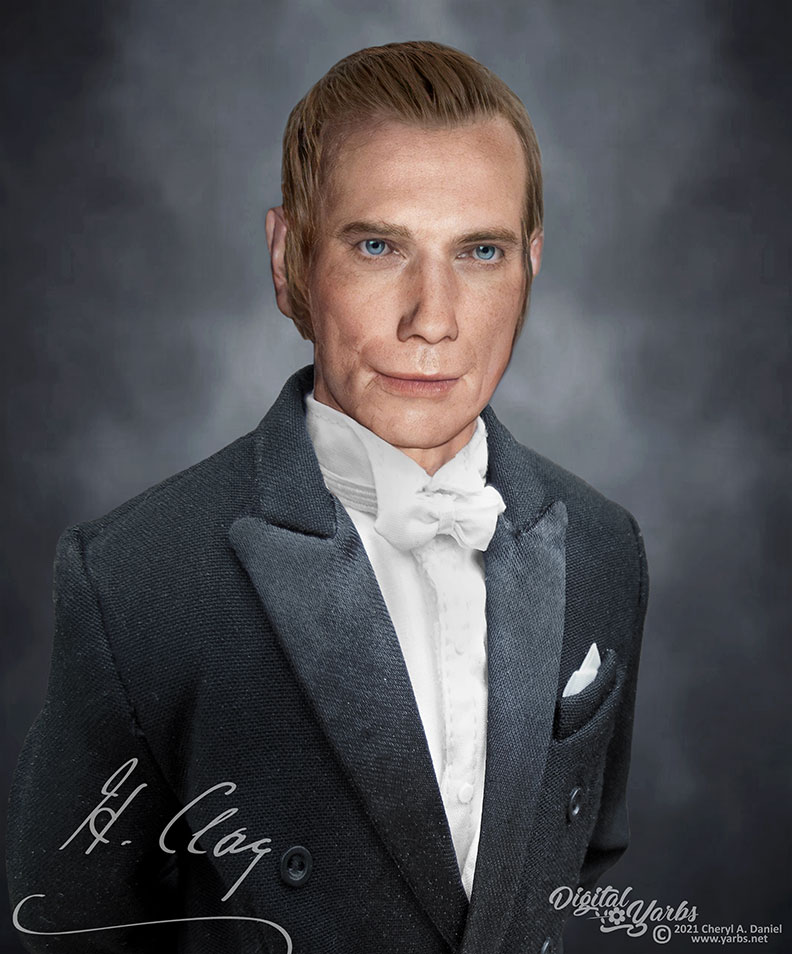
"Henry Clay was born in Hanover county, Virginia, April 12, 1777, and died at Washington, June 29, 1852, preceding his compeer Webster to the grave by only a few months. On reaching his majority, he removed to Lexington, Kentucky, which became his future home, although he was so rarely out of public life that he was comparatively little there. Having chosen the law for his profession, he was admitted to the bar, and before attaining his thirtieth year, was sent to the Senate of the United States. He was strenuous in his support of home industries, and endeavored by legislation to enforce upon legislators the wearing of homespun cloths. So ardent was he in this, that his course led to a duel with Humphrey Marshall, in which both were slightly wounded."3
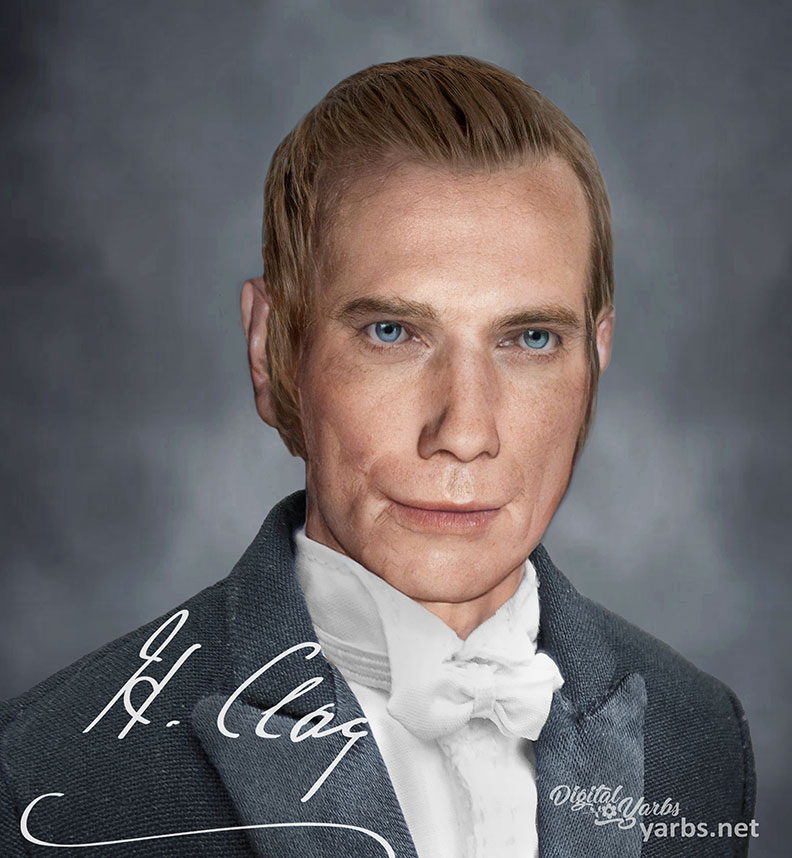
"At the close of the war of 1812, Clay was one of the commissioners appointed to negotiate the treaty of peace with Great Britain, and as such signed the Treaty of Ghent. He was known as “the great Pacificator,” from his course in the events that led to the Missouri Compromise and later averted Southern “nullification.” He was an active and bitter opponent of Andrew Jackson, and supported John Quincy Adams against him for the Presidency, his reward being the portfolio of State; but there was no bargain and corruption about this business as his enemies claimed and which haunted Clay’s political career throughout the rest of his life. He was an ambitious man, and his failure to reach the goal of his ambition—the presidential chair—was a fatal blow."4
"Clay was undoubtedly one of the greatest orators this country has produced, and a man with much natural ability, but little study and cultivation. His name is one to conjure with in old Kentucky, and it is with a moist eye that personal reminiscences of Clay are related out there in the blue grass State, even at this day, nearly half a century after his decease."5
"Clay is generally regarded as one of the important political figures of his era. Most historians and political scientists consider Clay to be one of the most influential speakers of the house in U.S. history. In 1957, a Senate Committee selected Clay as one of the five greatest U.S. senators, along with Daniel Webster, John C. Calhoun, Robert La Follette, and Robert A. Taft. A 1986 survey of historians ranked Clay as the greatest senator in U.S. history, while a 2006 survey of historians ranked Clay as the 31st-most influential American of all time."6
"Some historians have argued that a Clay victory in the 1844 election would have prevented both the Mexican-American War and the American Civil War."7
Portrait Comparisons
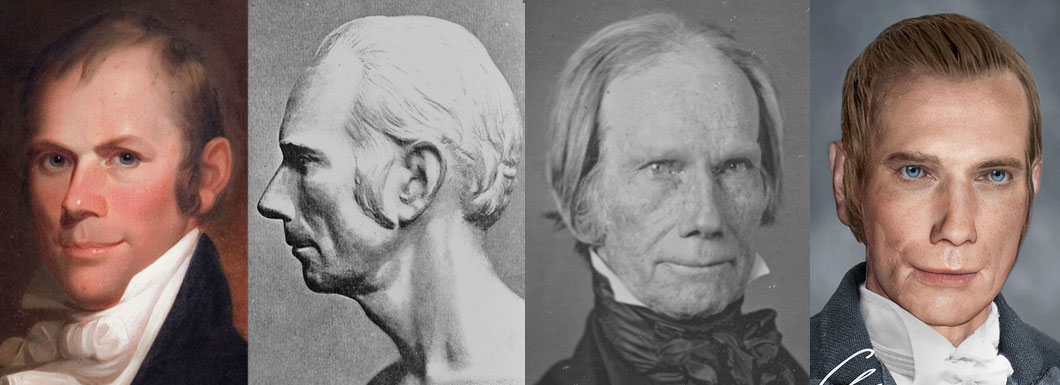
1) 1818 portrait, age 41 8 2) Life mask profile, age 48 93) Photograph ca. 1850 age 73 104) Life mask, age 48.
Thanks for watching. If you liked this video, support my work by subscribing to Digital Yarbs YouTube Channel!

Sources & References:
1,2,3,4,5,9 Charles Henry Hart. “The Project Gutenberg EBook of Browere’s Life Masks of Great Americans” https://www.gutenberg.org/files/51890/51890-h/51890-h.htm
6,7Henry Clay. Wikipedia, Wikimedia Foundation, 25 May 2021, en.wikipedia.org/wiki/Henry_Clay
8Wikipedia.en.wikipedia.org/wiki/Henry_Clay#/media/File:Henry_Clay.JPG
10National Portrait Gallery. npg.si.edu/object/npg_NPG.90.24
Original Life Mask Image Source: Fenimore Art Museum, Cooperstown, New York
